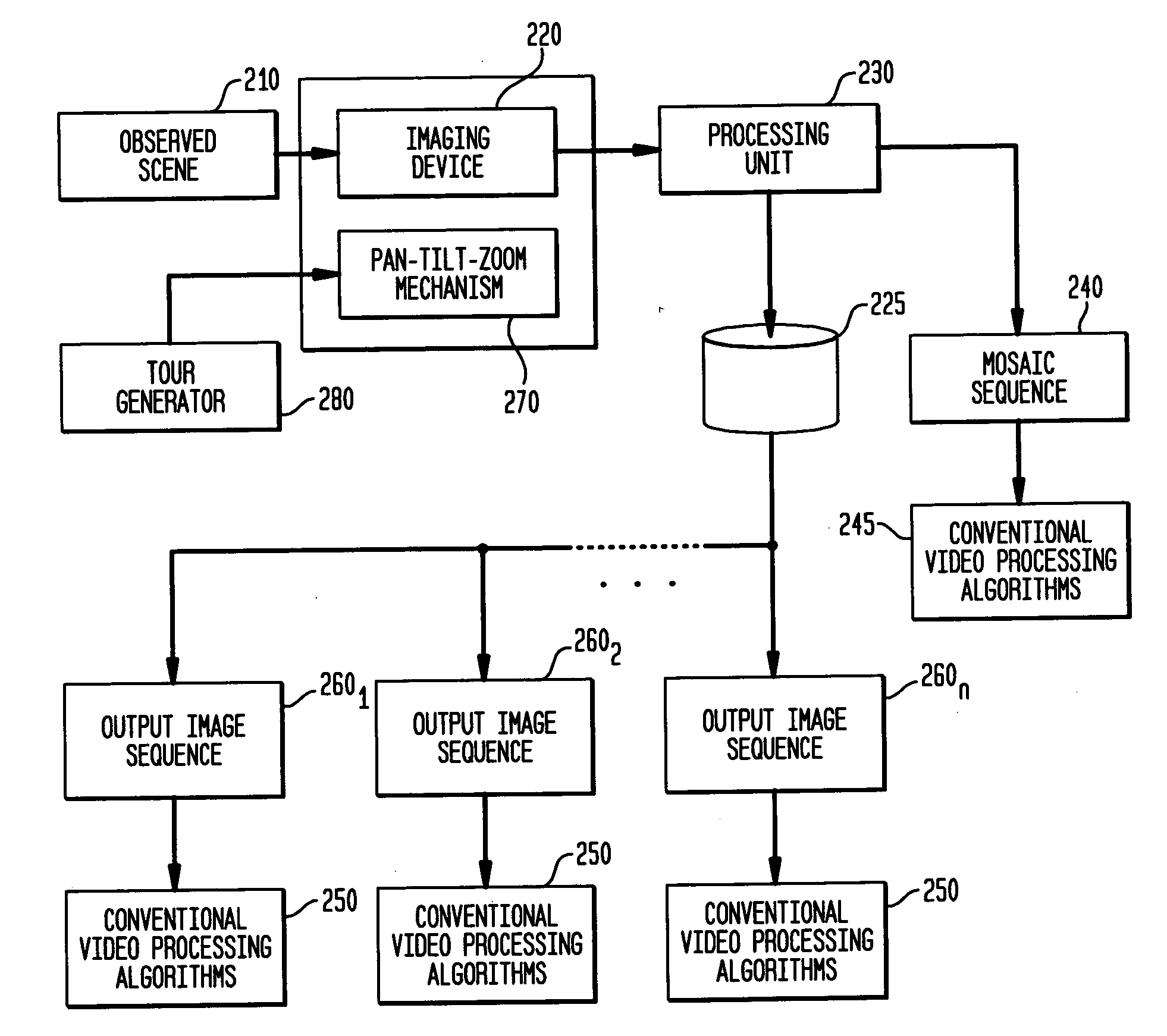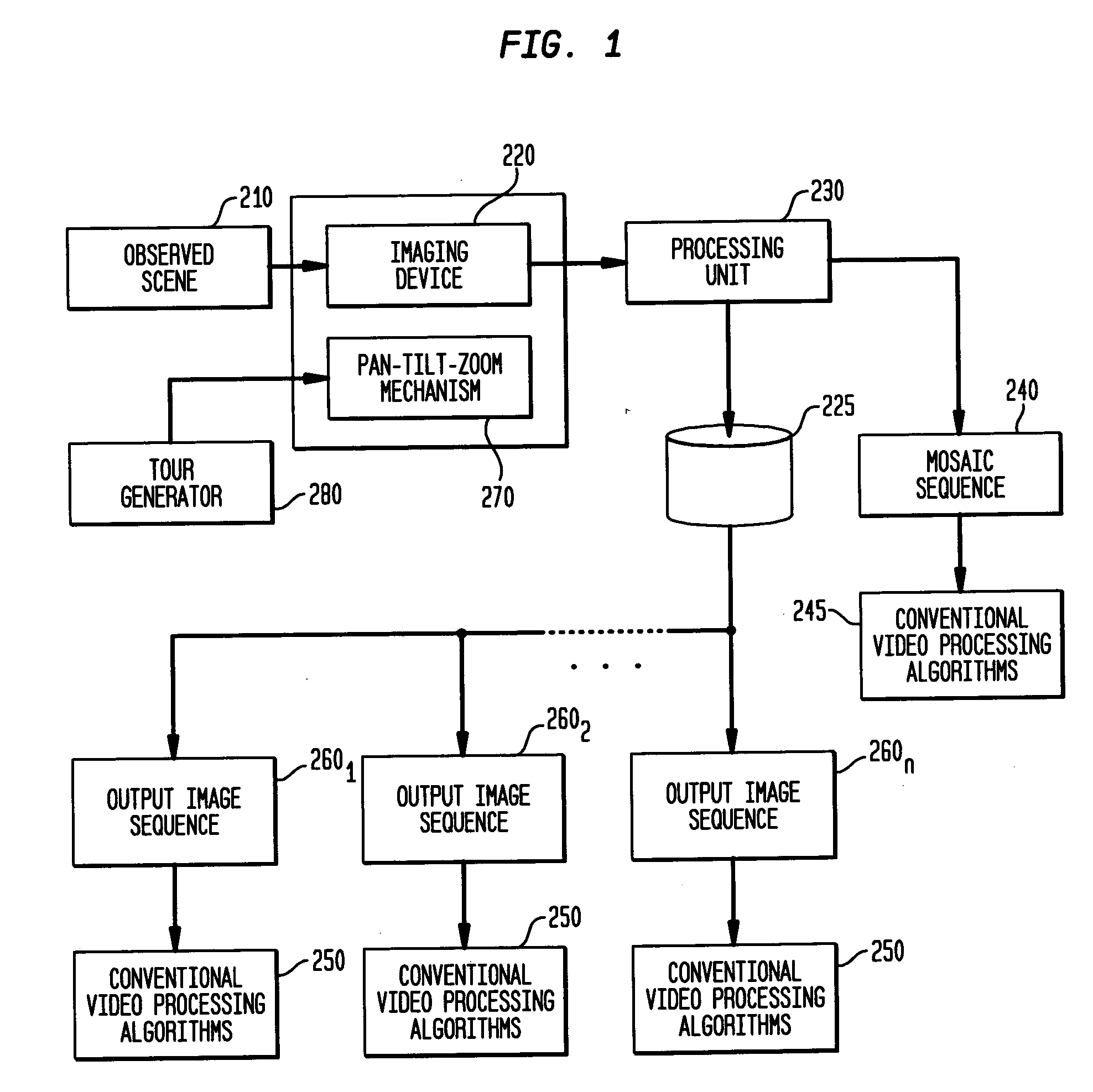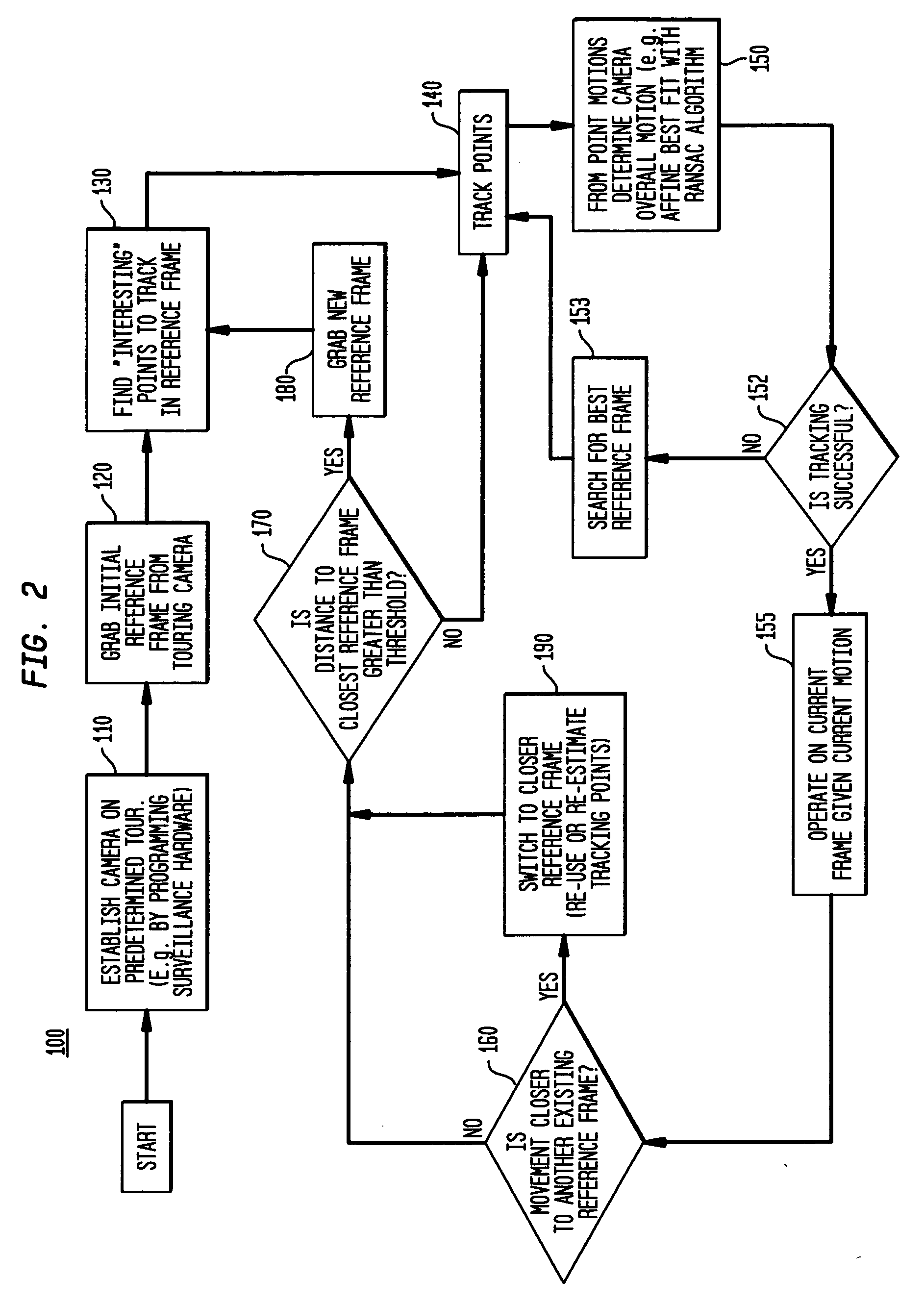System and method for analyzing video from non-static camera
a non-static camera and video analysis technology, applied in the field of surveillance systems and methods, can solve the problems of high resolution cameras, many cameras, and insufficient resolution of camera devices to acquire sufficient resolution images for some tasks,
- Summary
- Abstract
- Description
- Claims
- Application Information
AI Technical Summary
Benefits of technology
Problems solved by technology
Method used
Image
Examples
Embodiment Construction
[0021] The present invention is directed to a system and method for analyzing non-static camera images by spatio-temporally relating the (known) position of the camera and the corresponding images.
[0022]FIG. 1 depicts the multi-scale visual processing system block diagram 200 for the static camera according to the invention. As shown in FIG. 1, the system generates video of an observed scene 210 by a single imaging device 220. For purposes of the description, it is assumed the imaging device 220 is a moving camera, implemented for taking video images of a field of view according to a programmed tour or, alternatively, manual manipulation, and employing a pan-tilt-zoom, or other motion mechanism, 270. That is, the moving camera may be steered manually or according to a tour (pre-determined or generated “on the fly”) as controlled by a “tour generator” device 280 (FIG. 1) whose parameters (pan, tilt, zoom, rotation, dolly, translate) may or may not be known in advance, or made availa...
PUM
 Login to View More
Login to View More Abstract
Description
Claims
Application Information
 Login to View More
Login to View More - R&D
- Intellectual Property
- Life Sciences
- Materials
- Tech Scout
- Unparalleled Data Quality
- Higher Quality Content
- 60% Fewer Hallucinations
Browse by: Latest US Patents, China's latest patents, Technical Efficacy Thesaurus, Application Domain, Technology Topic, Popular Technical Reports.
© 2025 PatSnap. All rights reserved.Legal|Privacy policy|Modern Slavery Act Transparency Statement|Sitemap|About US| Contact US: help@patsnap.com



